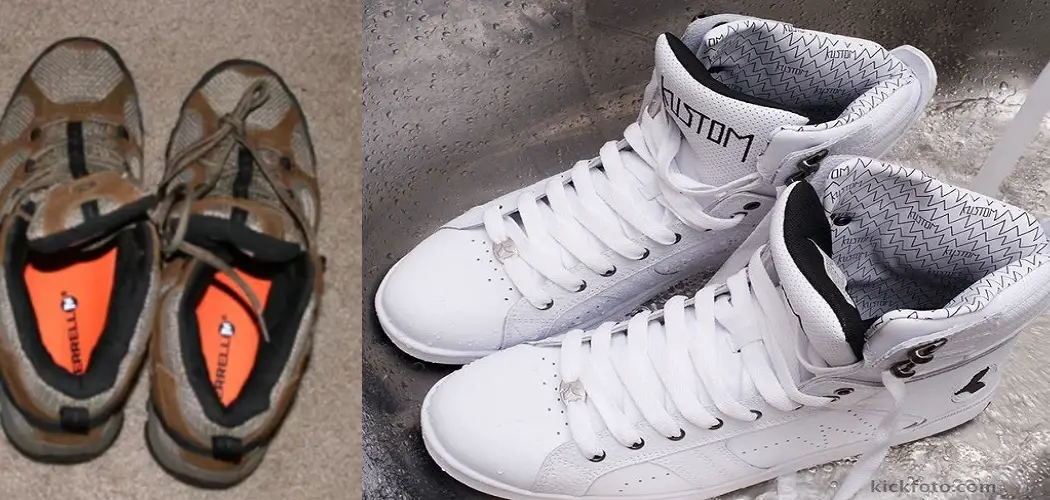To keep your shoes in good condition, it is essential to clean the insoles regularly. Even if your insoles are non-removable, there are still ways to clean them. This blog post will outline three methods for cleaning non-removable insoles. Whether you use a toothbrush, vinegar, or baking soda, these methods will help to keep your shoes looking and smelling fresh. In this article, we will discuss how to clean non-removable insoles. So, without further ado, let’s get started!
Non-removable insoles are a common feature in shoes. While they cannot be removed for cleaning, this does not mean that they should be neglected. Instead, there are a few ways to clean them without taking them out. Let’s take a look at three of the most popular methods.
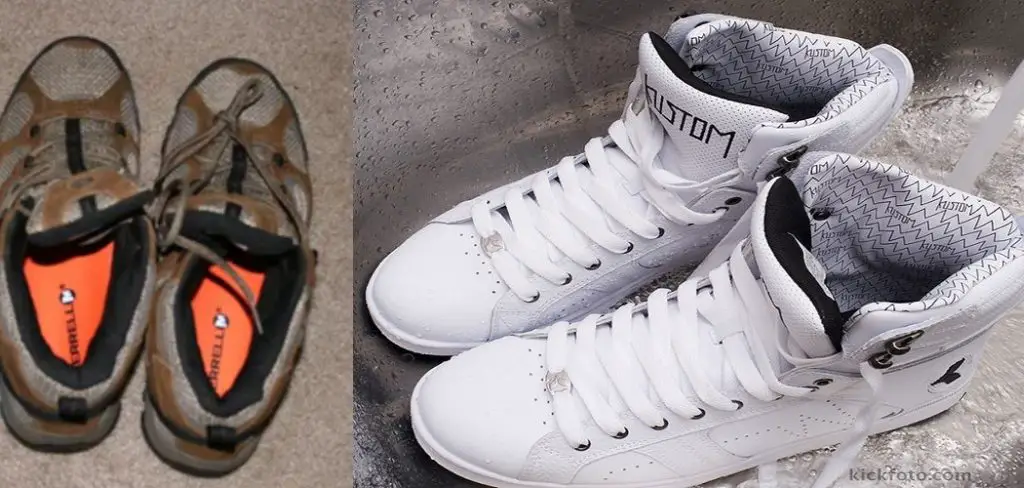
Summary: When it comes to cleaning non-removable insoles, the process can be straightforward with a few simple steps. Firstly, removing any loose dirt or debris from the insoles using a soft brush is recommended before washing them. The next step is to prepare a solution of warm water and a mild detergent or soap. Dip a soft cloth or toothbrush into the solution and gently scrub the insoles.
A Detailed Gude on How to Clean Non-removable Insoles
Method 1. Lightly Scrubbing with Soap and Water
The best way to clean your non-removable insoles is by lightly scrubbing them with soap and water. Just make sure that you use a mild soap and avoid harsh chemicals or solvents.
Once you have scrubbed them with soap and water, you can rinse them off with tap water. Get all the suds and soap off of the insoles, as any residue could lead to skin irritation.
Method 2. Use Charcoal
Charcoal can adsorb toxins, which means it will bind to them and remove them from the surface it is in contact with. The porous surface of charcoal helps it do this on a large scale. It also has an alkaline pH, which helps neutralize any acids that may be present on the insole’s surface.
What You Need:
- Activated Charcoal Powder
- A Bowl
- Water
- Soft toothbrush or cloth
Step 1: Prepare the Activated Charcoal
If you are using activated charcoal in powder form, you will need to prepare it before use. Mix 1 part activated charcoal with three parts water until it forms a thick paste. If you use capsules, open them and pour the powder into the bowl.
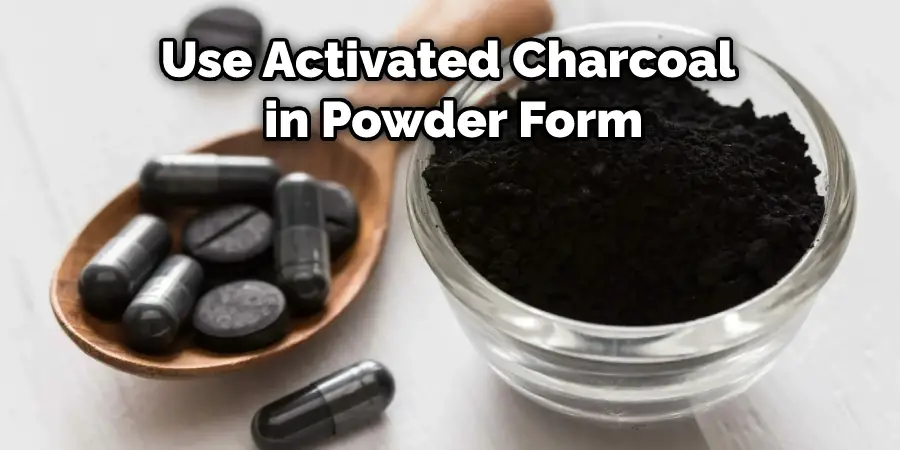
Step 2: Soak the Insoles
Place the soiled insoles in a bowl of warm water and add enough activated charcoal to cover them completely. Let them soak for 30 minutes.
Step 3: Scrub the Insoles
Remove the insoles from the bowl and scrub them with a soft toothbrush or cloth to remove any dirt or stains. Be sure to get into all the nooks and crannies. Rinse with clean water and allow to air dry.
Method 3. Using Dish Soap
Another method you can use to clean your non-removable insoles is dish soap.
What You Need:
- Dish soap
- Water
- Bucket or container
- Toothbrush or scrub brush
- Paper towels or a cloth
Step 1: Fill a bucket or container with water and add enough dish soap to create suds.
Step 2: Place your non-removable insoles in the bucket or container and let them soak for about 15 minutes.
Step 3: Use a toothbrush or scrub brush to scrub the insoles clean. Be sure to get into all the nooks and crannies.
Step 4: Rinse the insoles with water and let them air dry.
Step 5: Put them back in your shoes once they are dry.
Method 4. Use Tooth Brush
If you have a soft toothbrush, it might be able to help clean the inside of your shoes. Get a little water on the toothbrush, and scrub away the dirt and debris inside your shoe. This will work exceptionally well if your insole is removable. If it’s not removable, you may need to use more force to get the dirt out. Just be careful not to damage your shoe or insole.
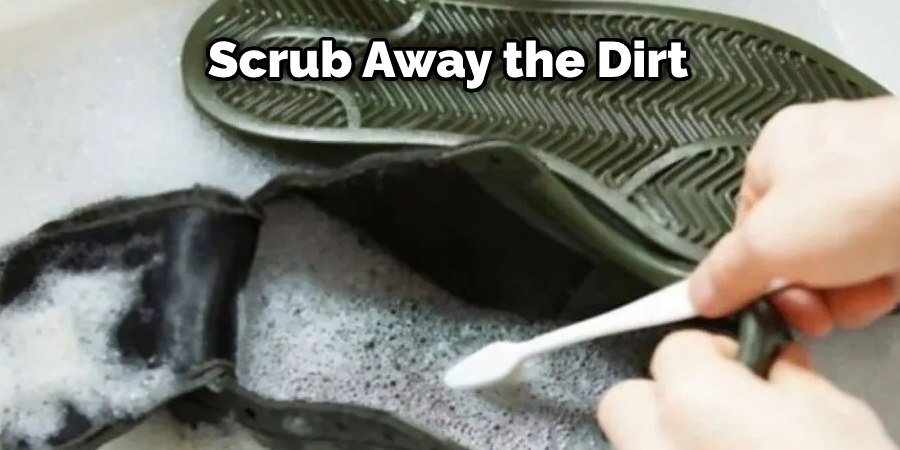
Method 5. Use Vinegar
Another way to clean non-removable insoles is with vinegar. Vinegar is a natural disinfectant and will help eliminate any bacteria or fungus that may be present on the insole. This is a crucial method in how to clean non-removable insoles.
.
What You’ll Need:
- Vinegar
- Bowl
- Bucket or sink
- Hot water
- Sponge
- Toothbrush
Step 1: Before You Start
It’s important to note that vinegar can be harmful to some materials, so it’s best to test a small inconspicuous area of the insole before cleaning it with vinegar. If there is any discoloration or damage after testing, discontinue use.
Step 2: Pour Vinegar into a Bowl
Pour enough vinegar into a bowl to completely submerge the insole.
Step 3: Soak the Insole in Vinegar
Submerge the insole in the vinegar and let it soak for at least 30 minutes.
Step 4: Scrub with a Sponge
While the insole is still submerged, use a sponge to scrub all the dirt and bacteria off the surface. Be sure to get in all of the cracks and crevices.
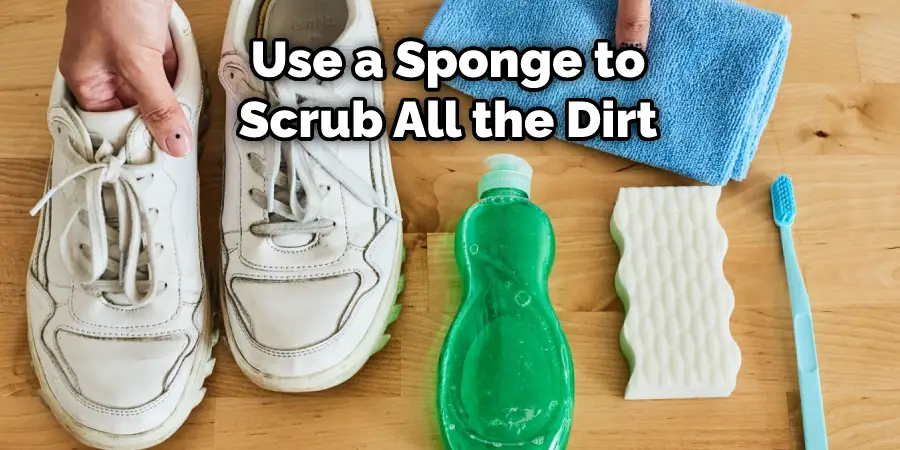
Step 5: Rinse with Hot Water
After scrubbing the insole, use hot water to rinse it off.
Step 6: Dry with a Towel
Dry the insole with a towel. You may also want to air dry it outside or use a hairdryer in a low heat setting.
Step 7: Brush with a Toothbrush
Use a toothbrush to get into all of the nooks and crannies of the insole. This will help to remove any leftover bacteria or fungus.
Step 8: Repeat as Necessary
If needed, you can repeat these steps until the insole is clean. Be sure to test an inconspicuous area before you start cleaning with vinegar to ensure it doesn’t damage the insole.
Method 6. Using Baking Soda Paste
Baking soda is another excellent option for cleaning non-removable insoles.
What You’ll Need:
- 1/4 cup baking soda
- 1/4 cup water
- -Old toothbrush
Step 1: Prepare the baking soda paste. Combine the baking soda and water in a bowl, mixing until the ingredients are thoroughly combined.
Step 2: Apply the paste to the insoles. Use an old toothbrush to apply the baking soda paste evenly to the entire surface of the insoles.
Step 3: Let the paste dry. Leave the baking soda paste on the insoles for at least two hours or overnight.
Step 4: Remove the paste. Use a damp cloth to wipe away any remaining baking soda paste from the insoles.
Method 7. Using Rubbing Alcohol
Rubbing alcohol is a disinfectant and will kill any bacteria or fungus on the insole. It is also a solvent to dissolve any oils or dirt on the insole.

What You Need:
- Rubbing alcohol
- Cotton balls or a soft cloth
- Warm water
- Bucket or sink
Step 1: Make a solution of 50% rubbing alcohol and 50% water. Soak a cotton ball or soft cloth in the solution and wring out any excess.
Step 2: Gently scrub the insole with the cotton ball or cloth. Be sure to get into all the nooks and crannies.
Step 3: Rinse the insole with warm water.
Step 4: Allow the insole to air dry completely before putting it back in your shoe.
Disinfect Inside of Shoes (Non-Removable Insoles)
Place Shoes in the Sun:
If your shoes have removable insoles, you can take them out and clean them separately. However, if your shoes do not have removable insoles, you will need to disinfect the inside of your shoes. One way to do this is by placing them in the sun. Sunlight will kill any bacteria or fungus that may be present.
Place your shoes in the sun place them outside in direct sunlight. The sun’s UV rays will help kill any bacteria or fungus that may be present. Be sure to leave your shoes in the sun for at least an hour. You may want to rotate your shoes every so often so that they all get exposed to the sun.
Put Vinegar Inside of Your Shoe:
Another way to disinfect your shoes is by putting vinegar inside of them. Vinegar is a natural disinfectant and will kill any bacteria or fungus present.
To do this, pour vinegar into a small bowl and place it inside your shoe. Be sure to spread the vinegar around to cover the entire inside of your shoe. Leave the vinegar in your shoe for at least an hour. You may want to rotate your shoes every so often so that they all get exposed to the vinegar.
Cleaning With the Right Material:
A non-removable insole can be challenging to clean, but it can be done. The first step is to identify the material of the insole. If it is made out of fabric, you can clean it with a damp cloth and mild detergent. If it is made out of leather, you can clean it with saddle soap or a leather cleaner. Finally, let the insole dry entirely before putting it back into your shoe.
Fill a Spray Bottle With Disinfect:
To disinfect the non-removable insoles, fill a spray bottle with disinfectant and lightly spray it over the entire insole. Let the disinfectant sit for a few minutes so that it can kill any bacteria or germs.
Use a Vacuum Cleaner Attachment:
If your vacuum cleaner has a hose and dusting attachment, you can use it to clean the soles of your shoes. First, remove as much dirt and debris as possible by gently brushing it away with the attachment. Then, use the vacuum cleaner to suction up any remaining particles.
Frequently Asked Questions
Do You Need to Remove Insoles When Washing Shoes?
In short, you can’t really rely on anything written in black and white when it comes to shoe care – there are always various exceptions that need to be taken into account. That being said, most shoe manuals suggest removing insoles when washing shoes, as they can become heavily contaminated with bacteria and other pollutants.
However, if you have sensitive feet or simply prefer to avoid manually removing insoles every time you wash your shoes, that’s totally up to you! Ultimately, it’s important to pay close attention to the specific instructions provided in any shoe care manual – it’s the best way to ensure optimal care for your footwear.
Can You Put Insoles in Washing Machine?
Unfortunately, no, you cannot put insoles in your washing machine. This is because dryers heat the fabric so fiercely that it can cause irreparable damage to any insoles you might place inside.
Are You Supposed to Remove Old Insoles?
The decision of whether or not to remove old insoles depends on a number of factors. This includes the type of insoles you are using and their condition. If they are in good working order and haven’t deteriorated significantly, you may choose to leave them in place. However, if they have started wearing away at the footbed or become ineffective due to age or wear & tear, then it might be beneficial to replace them with new ones.
Can You Wash Plantar Fasciitis Insoles?
Yes, you can wash plantar Fasciitis insoles in the washing machine. Be sure to remove any stickers or labels that may be on them and add them to your laundry list. Machine-washable materials should be washed in hot water with a mild detergent and air dried.
Conclusion
If you have non-removable insoles in your shoes, we hope these tips help you clean them! It’s essential to keep your feet healthy and free of bacteria, so take a few minutes every month to give your insoles a good scrub. In addition, we hope you find this article on how to clean non-removable insoles helpful.

